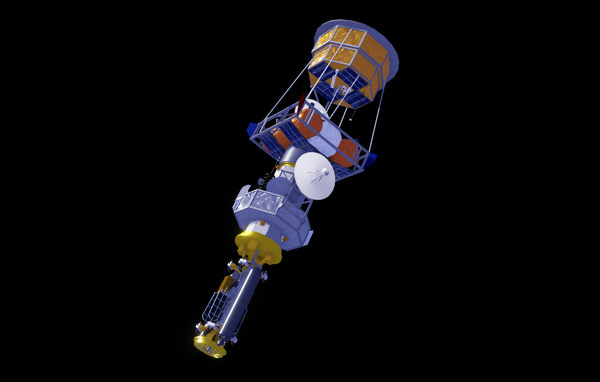01/01/2023
BREAKING NEWS
GTRAD RETURNS TO THE INDUSTRY ACHERON FIRES ITS SEVEN ENGINES FOR THE FIRST TIME WILL OSIRIS EVER FLY AGAIN? MONTHS OF HARDWARE AND MANAGEMENT CHANGES MAKE THE VEHICLE'S FUTURE UNCERTAIN WHAT HAPPENED TO KARMAN AEROSPACE? TOTAL SILENCE FROM THE COMPANY CONFUSES THE INDUSTRY
GTRAD Launches Resident II Mars Mission on First G5011 Rocket
28 April, 2025
John Doe
This article is classed as
ACCURACY
GSAR lifts off from GLC-42B at the Rock Ridge Space Centre. Video: Kwingo
The first Block 9 GSAR and first 5011 rocket successfully launched GTRAD's ambitious Resident II Mars mission on Sunday, 20th of April.
Blessed with clear weather and a countdown free of any serious technical anomalies, the 45 KBX-2 main engines thundered to full throttle in the last moments of the launch campaign that had taken months of work to reach culmination. Four large launch clamps secured to the first stage were then commanded to separate, rapidly pulling away as the vehicle moved skyward on more thrust than any previous GTRAD vehicle.
Liftoff of the GSAR rocket was at 4:16 p.m. ET (20:16 UTC), in the afternoon of a clear Sunday at the Rock Ridge Space Centre. The GSAR's five core stages each burned and separated as planned, leaving the upper stage to successfully conduct an extended burn to place the Resident II mission on its intended trajectory.
Following an over 30-minute launch across the Atlantic Ocean, the GSAR 5011 delivered Resident II into a proper trajectory, releasing the craft over Africa. Wire reports said Resident II was powered on at around 4:45 p.m. ET (20:45 UTC) Sunday evening.
After several weeks of system tests in space, Resident II will be maneuvered into its operational on a trajectory toward the red planet. From there, the satellite will conduct atmospheric condition studies at the south pole for up to 2 years, in tandem with its mobile cousin currently roving in Xanthe Terra.
This mission and others are in a long-term goal to eventually send humans to Mars.

Resident II Spacecraft(s) shortly following separation from the rocket. Photo: Kwingo
This particular configuration of the launcher -- called the GSAR 5011 model with five cores and single-engine upper stage -- had never flown. But its debut was performed flawlessly, and extended the string of consecutive successful missions by the GSAR family to 12, securing its dozen flight milestone with its success streak remaining at a rare 100%.
The flight debuted the Block 9 variant, showcasing the improved vehicle design and hardware, and bringing a new line in the GSAR evolutionary family.
"Another outstanding launch from the GTRAD team, rocketing resident II to the red planet. I’m Proud of what we can do. Yes, I have been drinking. Wanna fight about it?" Said the CEO of GTRAD, Chris_HadfieldCA.





